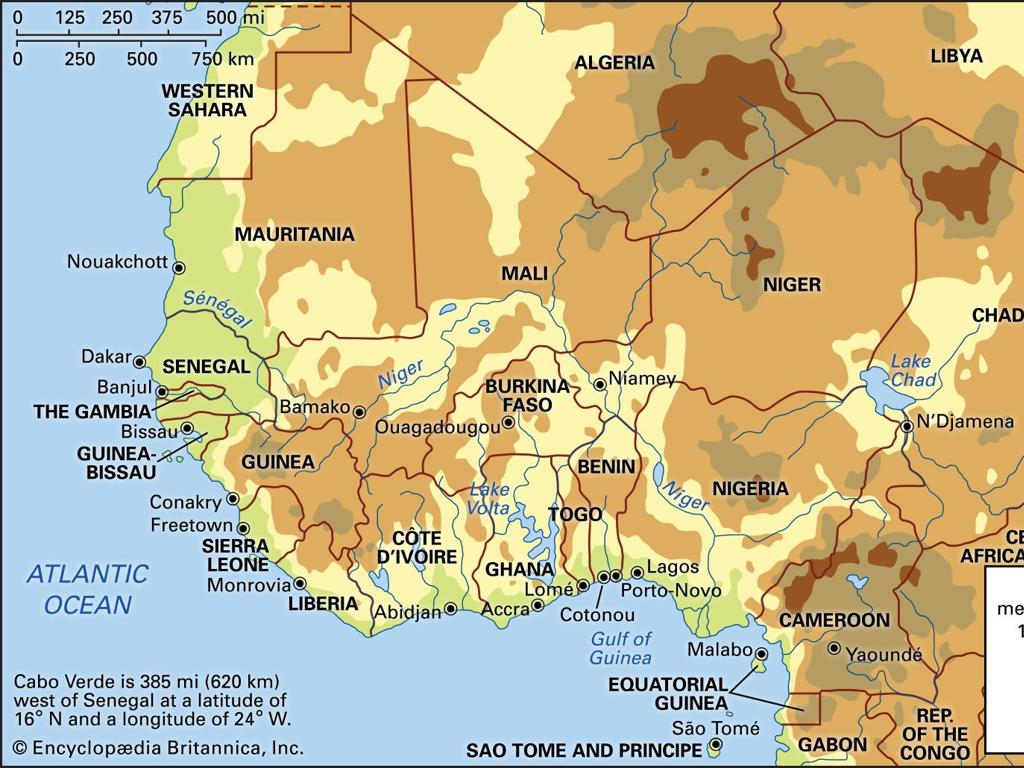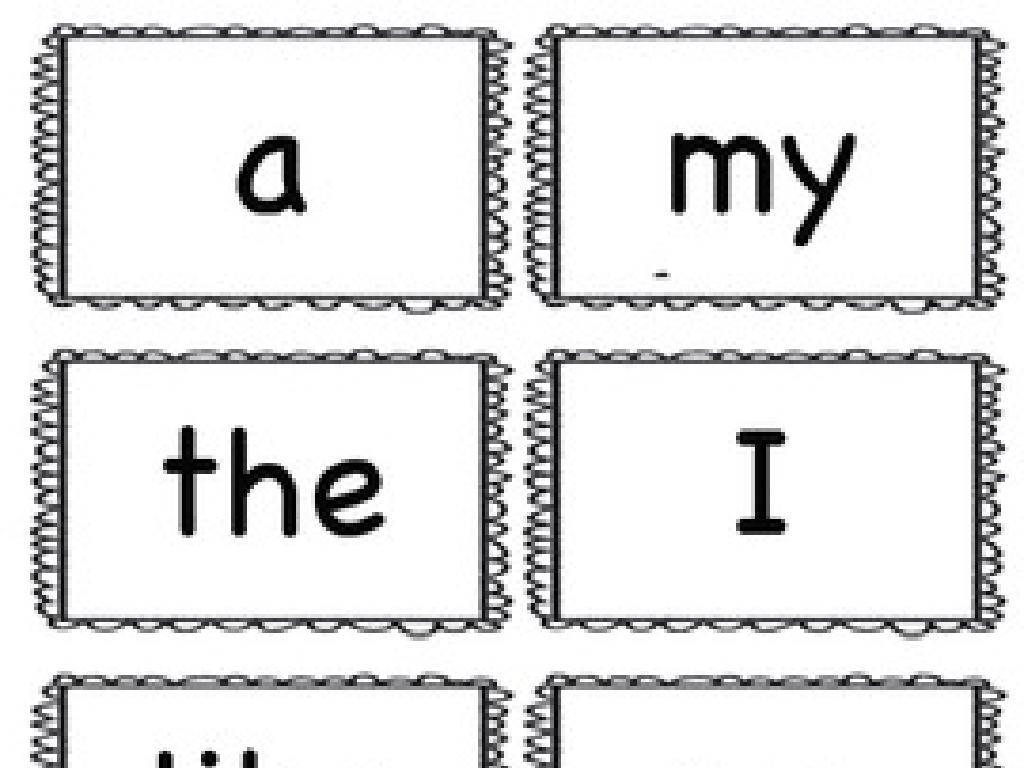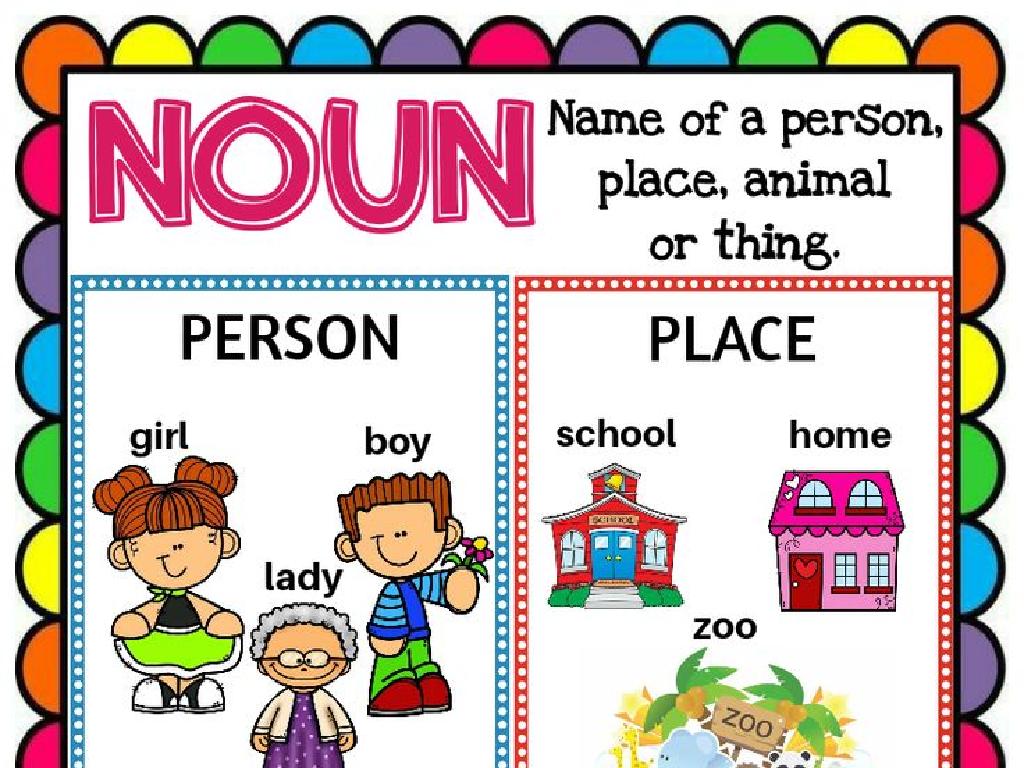Evaluate Two-Variable Equations: Word Problems
Subject: Math
Grade: Seventh grade
Topic: Two-Variable Equations
Please LOG IN to download the presentation. Access is available to registered users only.
View More Content
Introduction to Two-Variable Equations
– Understanding variables in equations
– Variables represent unknown numbers
– Defining two-variable equations
– Equations with two different variables, e.g., x and y
– Real-life applications
– Used in budgeting, planning, and more
– Solving word problems
– Apply equations to solve practical problems
|
This slide introduces the concept of two-variable equations, which are fundamental in algebra and applicable in various real-life situations. Start by explaining that variables are symbols representing unknown values that we aim to find. Two-variable equations involve two different unknowns, commonly represented as x and y. Emphasize the importance of these equations in everyday contexts, such as budgeting finances or planning materials for a project. Conclude by highlighting that understanding how to set up and solve these equations is crucial for tackling word problems that students may encounter in tests or real-world scenarios. Encourage students to think of situations where they might use two-variable equations and prepare them for upcoming examples and exercises.
Understanding Variables in Two-Variable Equations
– Define a mathematical variable
– A symbol representing a number we don’t know yet
– Variables in simple equations
– For example, in x + 2 = 6, x is a variable
– Variables as unknowns
– We find the value of variables to solve equations
– Solving for variables in word problems
– Use given information to find values of x and y
|
This slide introduces the concept of variables within the context of two-variable equations. A variable is a symbol, often a letter, used to represent an unknown value in mathematical expressions and equations. Provide simple equations as examples to illustrate how variables are used. Emphasize that variables are the unknowns we aim to solve for in equations. When dealing with word problems, students should learn to translate the problem into equations with variables and then solve for those variables using the given information. Encourage students to practice by setting up and solving equations from various word problems, reinforcing their understanding of variables as tools to find solutions.
Tackling Two-Variable Word Problems
– Understanding word problems
– A math scenario described in text form.
– Identifying variables
– Variables represent unknowns in the problem, often labeled as x and y.
– Grasping the question’s importance
– Comprehending the question directs the problem-solving approach.
– Strategies for solving
– Use systematic steps: read carefully, identify variables, write equations, and solve.
|
This slide introduces students to the concept of word problems involving two variables, which are often encountered in algebra. Start by explaining what a word problem is and how it applies math to real-life situations. Emphasize the importance of identifying the variables involved, as they are key to setting up the equations needed to solve the problem. Stress that understanding the question is crucial; students must know what is being asked to find the right solution. Provide a structured approach to solving these problems, including reading the problem carefully, identifying all variables and what they represent, writing down the equations that relate these variables, and then using algebraic methods to solve for the variables. Encourage students to practice with examples and to ask questions if they’re unsure about any step in the process.
Writing Equations from Word Problems
– Identify key information
– Find variables and numbers in the problem
– Translate words to expressions
– Convert verbal phrases to algebraic terms
– Practice with an example
– Use a sample problem to apply skills
– Discuss solution steps
– Outline the process to solve the equation
|
This slide is aimed at helping students learn how to extract key information from word problems and translate them into two-variable equations. Start by identifying the variables and any numbers that are mentioned in the problem. Teach students how to turn phrases like ‘total cost’ or ‘number of items’ into algebraic expressions. Provide a practice example, such as finding the cost of items given the price and quantity, and guide students through writing the corresponding equation. Discuss the steps to solve the equation, emphasizing the importance of understanding the problem context to set up the correct equation. Encourage students to ask questions and work through additional problems for practice.
Solving Two-Variable Equations
– Methods to solve two-variable equations
– Graphing, substitution, elimination
– Substitution to find values
– Replace one variable with its value
– Elimination to find values
– Add or subtract equations to eliminate a variable
– Practice with word problems
|
This slide introduces students to the concept of solving two-variable equations, which is a key skill in algebra. Start by discussing the different methods available: graphing, substitution, and elimination. Explain how substitution involves solving one equation for one variable and then replacing that variable in the other equation. For elimination, describe how adding or subtracting the equations can remove one variable, making it easier to solve for the other. Provide examples of each method and then give students word problems to apply what they’ve learned. Encourage them to identify which method might be more efficient based on the given equations. The goal is for students to become comfortable with these foundational techniques in algebra.
Evaluating Two-Variable Equations
– Substitute values into equations
– Replace variables with given numbers to find solutions
– Check solutions for correctness
– Verify by plugging solutions back into the original equation
– Practice with an example
– Use x=3, y=2 in 2x + y = 8. Does it work?
– Understand evaluation process
|
This slide introduces students to the process of evaluating two-variable equations through substitution and verification. Start by explaining how to substitute given values for variables in an equation. Emphasize the importance of checking their work by substituting the solution back into the original equation to ensure accuracy. Provide a practice example, such as evaluating the equation 2x + y = 8 with x=3 and y=2, and ask students to verify if the solution is correct. This exercise will help students understand the evaluation process and prepare them for solving word problems involving two-variable equations.
Word Problems with Two-Variable Equations
– Break down Problem 1
– Understand the problem, identify what’s asked and the data given.
– Identify variables in Problem 2
– Determine the two unknowns that the problem revolves around.
– Group Activity: Solve Problems
– Collaborate to find solutions to given word problems.
– Discuss solutions and methods
|
This slide is focused on applying two-variable equations to solve word problems. Start with Example Word Problem 1 by breaking it down into smaller parts to make it easier to understand. Then, move on to Example Word Problem 2, where students will identify the variables involved. For the group activity, divide the class into small groups and assign different word problems for them to solve collaboratively. After the activity, reconvene to discuss the various solutions and methods used. This will help students see different approaches to the same problem and understand the importance of clear variable identification and teamwork in problem-solving.
Class Activity: Craft Your Own Word Problem
– Create an original word problem
– Include two different variables
– Variables could represent things like numbers of apples and oranges
– Swap problems with a peer for solving
– Ensure each student has a partner to exchange problems with
– Discuss the solutions together
– After solving, compare approaches and answers
|
This activity is designed to engage students in creating and solving two-variable word problems, fostering a deeper understanding of the concept. Encourage creativity in problem formulation, perhaps using real-life scenarios. Remind students to clearly define their variables. After swapping, students will apply their knowledge to solve a peer’s problem, then discuss the solution process and the final answer. This peer-to-peer interaction promotes collaborative learning and critical thinking. Provide guidance on structuring word problems and offer examples if needed. As a teacher, circulate to assist and ensure each student is on track. Possible variations for different students could include problems based on their interests, such as sports statistics, shopping budgets, or science experiments.
Review and Q&A: Two-Variable Equations
– Recap of two-variable equations
– Summarize key points from today’s lesson on solving word problems with two variables.
– Invite student questions
– Address common challenges
– Common issues: setting up equations, interpreting results.
– Discuss misconceptions
– Misconceptions: variables must represent different things, solutions are always whole numbers.
|
This slide is aimed at consolidating the knowledge gained in today’s lesson on two-variable equations in word problems. Begin with a brief recap, highlighting the steps to set up and solve these equations. Open the floor for students to ask questions, encouraging them to clarify any doubts. Address typical challenges students face, such as correctly setting up equations from word problems and interpreting the solutions. Discuss common misconceptions, such as the belief that variables must always represent different entities or that solutions to equations are always integers. Use this opportunity to reinforce understanding and correct any misunderstandings. Provide examples to clarify and conclude the session with a reminder of the importance of practice in mastering these concepts.
Homework: Mastering Two-Variable Equations
– Complete practice problem set
– Create a custom word problem
– Invent a scenario involving two variables
– Solve your created problem
– Apply two-variable equation skills to solve
– Preview: Systems of Equations
– Introduction to simultaneous equations
|
This homework assignment is designed to reinforce students’ understanding of two-variable equations through practice and creativity. The problem set provides structured exercises, while creating their own word problem encourages deeper engagement with the concept. Solving their own problem will test their comprehension. Additionally, students should begin to familiarize themselves with systems of equations, the next topic in our class, by reading the introductory material provided in their textbooks or online resources. This preparation will facilitate a smoother transition into more complex algebraic concepts.






